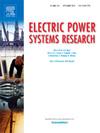A three-layer energy management system for hydrogen-powered ships combined instantaneous load forecasting
IF 3.3
3区 工程技术
Q2 ENGINEERING, ELECTRICAL & ELECTRONIC
引用次数: 0
Abstract
This paper proposes a three-layer energy management system (EMS) for hydrogen-powered ships (HPS) that combines instantaneous load forecasting. The EMS includes a one-layer instantaneous load forecasting subsystem (ILFS) and a two-layer optimization and scheduling subsystem (OSS). The ILFS is composed of variational mode decomposition (VMD) and an improved autoregressive integrated moving average model based on Itô process (IP-ARIMA). First, considering high volatility and randomness of ship load, VMD is used to decompose ship load into multiple relatively stable intrinsic mode functions (IMFs), and an IP-ARIMA forecasting model is established for each IMF. Then, the forecasted sequences of each IP-ARIMA are superimposed to obtain the final forecasted load sequence (FLS). The upper and lower layers of the OSS use model predictive control and receive the FLS from ILFS. After the upper layer optimizes the efficiency of the hydrogen fuel cell (HFC) and state of charge (SOC) of the storage battery (SB), the lower layer minimizes the operating and degradation costs of the HFC. Finally, the HFC and SB perform energy scheduling according to the instruction signals output by the EMS. Experimental results show that, compared to other methods, the proposed EMS significantly enhances both economy and durability of HPS operation.
求助全文
约1分钟内获得全文
求助全文
来源期刊

Electric Power Systems Research
工程技术-工程:电子与电气
CiteScore
7.50
自引率
17.90%
发文量
963
审稿时长
3.8 months
期刊介绍:
Electric Power Systems Research is an international medium for the publication of original papers concerned with the generation, transmission, distribution and utilization of electrical energy. The journal aims at presenting important results of work in this field, whether in the form of applied research, development of new procedures or components, orginal application of existing knowledge or new designapproaches. The scope of Electric Power Systems Research is broad, encompassing all aspects of electric power systems. The following list of topics is not intended to be exhaustive, but rather to indicate topics that fall within the journal purview.
• Generation techniques ranging from advances in conventional electromechanical methods, through nuclear power generation, to renewable energy generation.
• Transmission, spanning the broad area from UHV (ac and dc) to network operation and protection, line routing and design.
• Substation work: equipment design, protection and control systems.
• Distribution techniques, equipment development, and smart grids.
• The utilization area from energy efficiency to distributed load levelling techniques.
• Systems studies including control techniques, planning, optimization methods, stability, security assessment and insulation coordination.
 求助内容:
求助内容: 应助结果提醒方式:
应助结果提醒方式:


